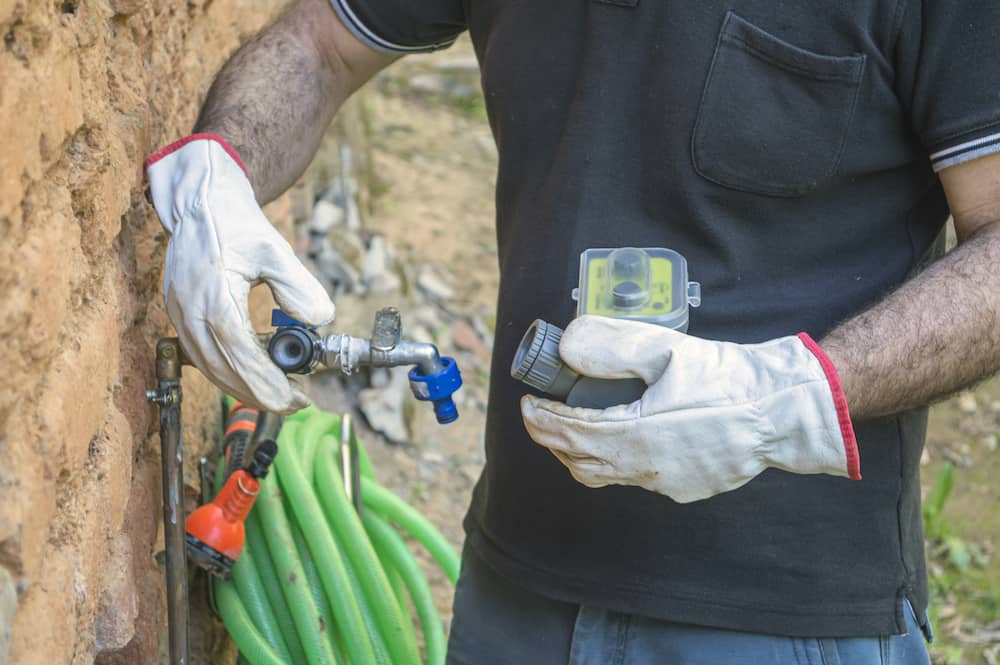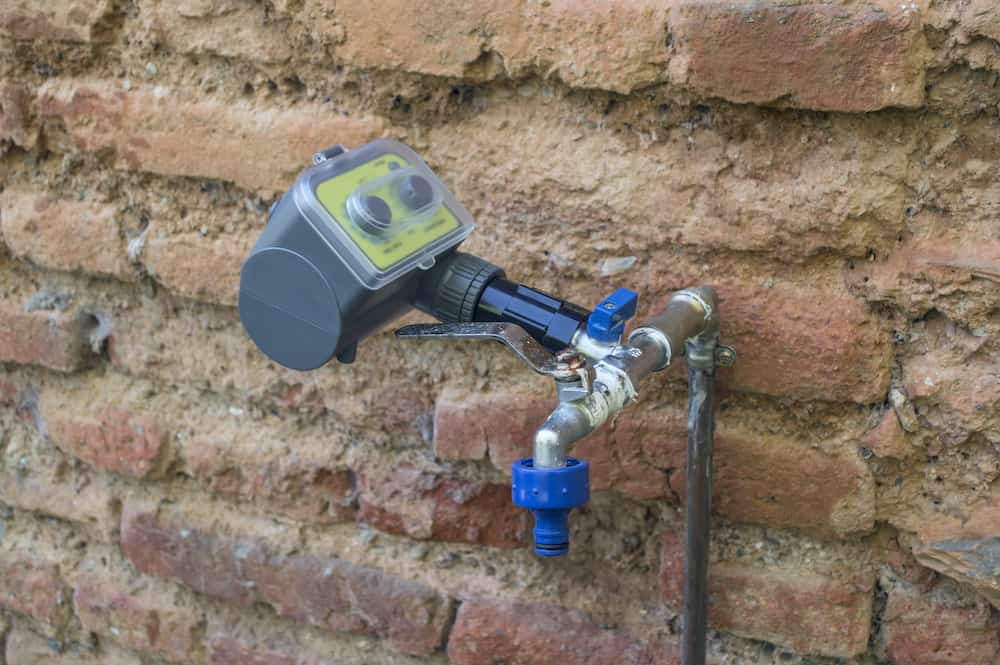A water pressure regulator controls the pressure of water that comes into the home from the main line. It’s also called a pressure-reducing valve or PRV for short.
Water pressure regulators are installed where the main water line comes into the house, just past the main shutoff valve. It’s a way to safely regulate the pressure of the water you use from faucets, showers, toilets, etc. It will also ensure the proper pressure to run a dishwasher, washing machine, etc.
Not all homes have or need a PRV. However, if your water pressure is too high, it can put extra stress on plumbing systems causing costly issues with pipes as well as causing leaks and floods. High water pressure can damage and destroy appliances such as dishwashers, washing machines, and water heaters.
A pressure reducing valve will regulate the flow and can save you money from leaks, flooding, damaged pipes, and ruined appliances.
In this guide, you’ll learn how pressure reducing valves work and how they are such an important part of plumbing systems where there is high water pressure. I explain what this specialty plumbing valve is, how it works, and what happens when the pressure reducing valve goes bad.
Water Pressure Regulator
A water pressure regulator is a special valve used to control and reduce water pressure coming inside your home via the main water line. Pressure is the force that pushes water through the pipes. A typical water pressure regulator is shaped like a dome and made from brass.
You might have too much water pressure, and the regulator corrects that so that you can get it to a safer level. The overage of water pressure is one of the common causes of plumbing problems in homes.
While it’s not necessary in all homes, it’s a good idea to ensure your home’s water pressure level is in the right place. Think of taking a shower with the right amount of pressure vs too low or too high.
How Does a Water Pressure Regulator Work?
When a water pressure regulator is installed, you’ll usually find it near the main water shutoff switch. You can activate or deactivate it using the adjustment screw. The water pressure regulator also uses a spring-loaded diaphragm. What it does is it can narrow or widen the water flow. In other words, you can control the water pressure just by using the adjustment screw.
You can expect most regulators to reduce the water pressure anywhere between 45 and 80 PSI. At these levels, it will lessen the stress of your plumbing system.
A PRV will reduce the risks of pipe damage, which could eventually lead to leaks. On top of that, there’s an even greater value to using a water pressure regulator. While it prevents leaks, it prevents an even greater issue: water damage. That water damage to your home can lead to mold growth along with other costly issues.
Do I Need a Water Pressure Regulator?
To determine whether you need a water pressure regulator, you’ll want to test the water pressure inside your home. What you’ll need is a pressure gauge. You’ll find one at almost any local hardware store.
- Once you have purchased the pressure gauge, install it by screwing on any hose bib or the faucet located close to your washing machine.
- Next, run cold tap water through the hose or faucet. Ideally, it should be between 40 PSI and 70 PSI.
If the PSI is higher than 80 PSI, you may want to consider a water pressure regulator.
If you see changes in your water pressure — coming out too fast or too slow — this would be a reason to test it.
Note, if you live in an urban area, keep in mind that the water pressure may fluctuate at any time. That means the pressure may reach a point where it can cause stress on your pipes.
Therefore, if you live in the city, you may need a water pressure regulator since you may not be able to control the pressure levels in the first place. You don’t want plumbing issues to happen due to something that is somewhat beyond your control.
Also, testing for water pressure in an urban area will differ depending on the time. Therefore, testing the water pressure at different times of the day like afternoon and evening.
What Is the Normal Water Pressure for a House?
In most homes, the water pressure levels in your home should be between 40 – 80 PSI. PSI stands for Pounds Per Square Inch. High water pressure is considered over 80 PSI. If the PSI is 100, that’s generally too high.
Most homeowners may not be aware of their water pressure levels or think much about it until the water starts coming out faster or slower.
If you have never measured the water pressure in your home, now would be a good time to do that. By using the instructions mentioned above, it doesn’t take long to test the pressure. Remember, anything above 80 PSI to 90 PSI might require you to purchase a water pressure regulator valve.
Thankfully, most of them will allow you to set the water pressure to 50 PSI. Others may allow you to go lower, to 40 PSI.
If you live in a rural area, your pressure will be consistent, while urban areas may fluctuate throughout the day.

Where Should a Water Pressure Regulator Be Installed?
The best place to install a water pressure regulator is where the main water line comes into the home, after the shutoff valve. In some areas, you may need to install the PVR at the meter. Calling a plumber is a way to ensure it’s installed properly and safely and in the correct location.
If you want to DIY, it’s best to install it after the shutoff valve. Before beginning, shut off the water line when you’re installing the water pressure regulator.
You’ll notice that most pressure regulator valves have an arrow pointing in the direction of the water flow. You’ll want to be able to make sure the valve is in the right position while installing the water pressure regulator. If it’s in the wrong position, it won’t work properly.
- As you install it, you’ll want to cut away at least six inches of pipe that comes after the main shutoff valve.
- Solder the fittings around the exposed pipe endings and insert the water pressure regulator as instructed.
- Tighten it on each end of the fitting with a pair of pliers. At this point, you can adjust to the pressure you want.
- Before ending the job, be sure to test out the water pressure and make adjustments accordingly.
What Happens When a Water Pressure Regulator Goes Bad?
There may come a time when your water pressure could go bad. What this is means is there is too much pressure which can damage pipes, faucets, and appliances. One of the obvious signs could be the water pressure appears higher than normal.
However, there may be other signs that you’ll want to watch for just to make sure. Here’s what to look for if and when a water pressure regulator goes bad and may need replacing:
Plumbing Leaks
While it may be hard to determine when a water pressure reducing valve goes bad, you may know until there is a small plumbing leak. At the first sign, replacing the valve and sealing off the leak points are necessary. Keep in mind that your home does have weak points. It’s up to you to find out where that is.
Water Leaking From the Faucet
The water is shut off completely, but you notice water dripping from the faucet. This might be a sign that the faucet could have a crack and some additional stress to the rest of the plumbing system itself.
The sooner you fix this, the better since you’ll prevent wasting a lot of water.
Thumping or Banging Noises from Pipes
If you hear thumping or banging noises after shutting off the faucet, that means a lot of extra pressure is being built up within your pipes. Sometimes, the noise is faint but can be heard in complete silence. Also, the noises can be loud like a hammer banging up against a wall.
Regardless of how loud it sounds, it’s a sign of a serious problem that may be occurring at some point in the near future.
How to Adjust Water Pressure Regulator
If you’ve determined the water pressure is too high or too low, you can adjust it.
- On the PRV is a screw which you can tighten or loosen.
- Using a wrench, tighten the screw to increase the water pressure. To do this, you need to turn it clockwise, which is to the right.
- If you want to reduce water pressure, use the wrench to loosen the screw by turning it to the left.
FAQ’S
Where Is My Water Pressure Regulator?
In order to locate the water pressure regulator, you need to find where the main water line comes into the home. From there, the valve is after the main shutoff valve.
How Long Does a Water Pressure Valve Last?
On average, a water pressure valve will last 15 years. You can have a plumber determine if yours needs to be replaced. You can check the PSI in advance as well by purchasing a pressure gauge and measuring the water pressure yourself.
What is PSI?
PSI stands for pounds per inch of water that flows through plumbing fixtures. Water pressure regulators measure the water pressure in PSI. The higher the number, the greater force or pressure the water flows.
What PSI Should My Water Pressure Be?
In general, for homes, the ideal PSI should be between 40 – 60 PSI, varying by location. When irrigating gardens, orchards, crops, a lawn, etc., it’s important to manage water pressure so as to prevent waste. Low water pressure and high water pressure can cause a loss of irrigation efficiency.
In addition, high water pressure can damage the irrigation system. See how to reduce irrigation water usage.
What is PRV?
PRV stands for pressure reducing valve. It’s a valve that controls the water pressure at the main line to control the water pressure into the home or business, etc.
Does Reducing Water Pressure Save Water?
Yes, reducing water pressure to lower levels can mean you will conserve water. Lowering it by 10 PSI or greater will reduce how much water you use monthly. Over the course of a year, this can amount to tens of thousands of gallons.
Water Pressure Level Testing and Water Pressure Regulators
If you are having issues with how fast or slow water comes out of your faucets, or if you see leaks, etc. it’s important to test it. You may be causing a lot of stress on your plumbing and not even know about it. You don’t want to deal with plumbing problems until it’s too late.
A water pressure regulator will ensure that you are using the right water pressure level inside your home. Whether you are using it to water your garden, showering, or doing the dishes, at least 40 to 60 PSI is generally enough.
Plus, these valves will allow you to control the water pressure that is more comfortable for you. Not only will your plumbing system thank you, but so will your wallet. That’s because you will save yourself the frustration and financial stress of repairs. Plumbing repairs can be expensive. Consider potential damage to the structure of your home as well. Lowering the water pressure is also a way to conserve water.
If the pressure has changed, you have leaks, or it feels too strong or weak, measure and adjust the water pressure level. If you don’t have a PRV, you may need one. In long run, it can save you time and money.
Related:

